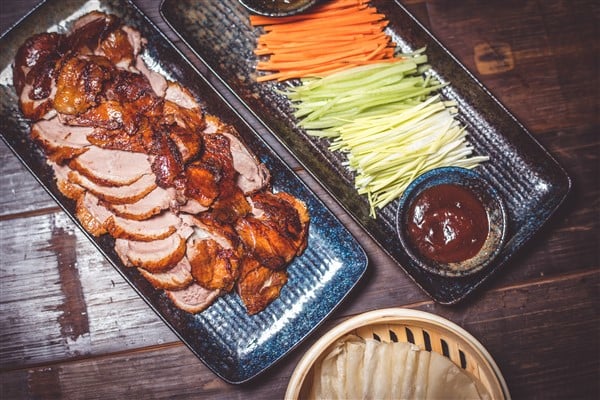A Brief Introduction of Lu (Shandong) Cuisine
What is Lu (Shandong) Cuisine?

Lu cuisine, one of the most notable Chinese culinary traditions, is represented by the cooking style of Shandong. It is typically recognized as a family of cuisines that comprises of local Jinan, Jiaodong (also known as Fushan style) and Ludong (including Confucian family) regional styles.
Ingredients
The ingredients in Lu dishes are locally sourced, from the seas of the Shandong peninsular, from the Yellow River and Weishan lake, and from the livestock of inner China.
Cooking Techniques
A variety of cooking techniques is employed in Shandong cuisine, particularly stir frying and deep frying. The end result is salty and rich without overpowering the palate.
Regional Influences
Lu cuisine has influenced the cooking styles of nearby regions including Beijing, Tianjin and the middle and lower reaches of the Yellow River. Even the imperial court cuisines of the Ming and Qing dynasties owe its rich legacy to the influence of Lu cuisine.
The Origin of Lu Cuisine
The birth and development of Lu cuisine is tightly interwoven with the geographical and historical characteristics of the Shandong peninsular.
Geographical Influences
The geographical location of Shandong on the lower reaches of the Yellow River gives it a warm and humid climate, with marked differences between seasons.
This combination of favorable factors guarantees fresh produce all year round. Livestock, seafood, exotic delicacies, and vegetables are readily sourced, perfecting the conditions for the flourishing of Lu cuisine.
Historical Influences
It has also helped that the Linzi area in Shandong served as the economic and political center of the Zhou dynasty. The abundance of capital attracted talented cooks to the region, giving rise to the first blossoming of Chinese cuisine.
Later, it underwent development during the Xia, Shang and Zhou dynasties and matured in the Han, Jin, Northern and Southern dynasties. In the Tang and Song dynasties it began to take its modern form and was perfected during the Yuan and Ming dynasties. During the Qing dynasty, it blossomed into the complete and extensive system it is today.
The Four Prominent Regional Chinese Cuisines
All four types of regional Chinese cuisine carry distinct traits, sharing the love for saltiness in common.
- Southern Chinese dishes are sweet and salty.
- Szechuanese love their food spicy.
- Western Chinese dishes play up their sourness.
- Central Chinese (including Shandong) food is uniquely rich and bold.
Even within Lu (Shandong) Cuisine, different regions differ subtly in their fragrance.
- Jiaodong cuisine is rich and fragrant.
- Jinan cuisine is light and fragrant.
- Lunan cuisine is bold and fragrant.
The way the dishes are salted also varies.
- Ludong (East Shandong) cuisine is salty and rich.
- Luzhong (Central Shandong) cuisine is salty and fragrant.
- Luxi (West Shandong) cuisine is influenced by the Shanxi traders frequenting the region via its canal and embodies a greater degree of sourness.
- The Nanhu region and its mines are famed for its spicy and salty dishes.
Confucianism in Lu Cuisine
From a cultural perspective, Lu cuisine is infused with Confucian values of moderation, harmony and balance. This is not surprising, considering the strong presence of Confucianism in Central China.
A native of Lu, Confucius was a foodie in the modern sense. He had much to say on the topic of food. “Food can never be too clean, and meat can never be sliced too thinly”. (Recorded in the Analects, ‘Confucius in his Private Life’). His recommendations on all aspects of dining, from the way food should be prepared, cooked, to the manners observed while dining, were invaluable to the development of Lu Cuisine.
Confucius’ descendants developed their own trademark and pushed their signature cuisine to greater heights. On par with imperial cuisine, the Confucius’ family cuisine is the crowning glory of Northern Chinese cuisine.
Fascinated by Confucius' wisdom and beliefs? We have more detail on Confucian Thought on People.
You may also like: